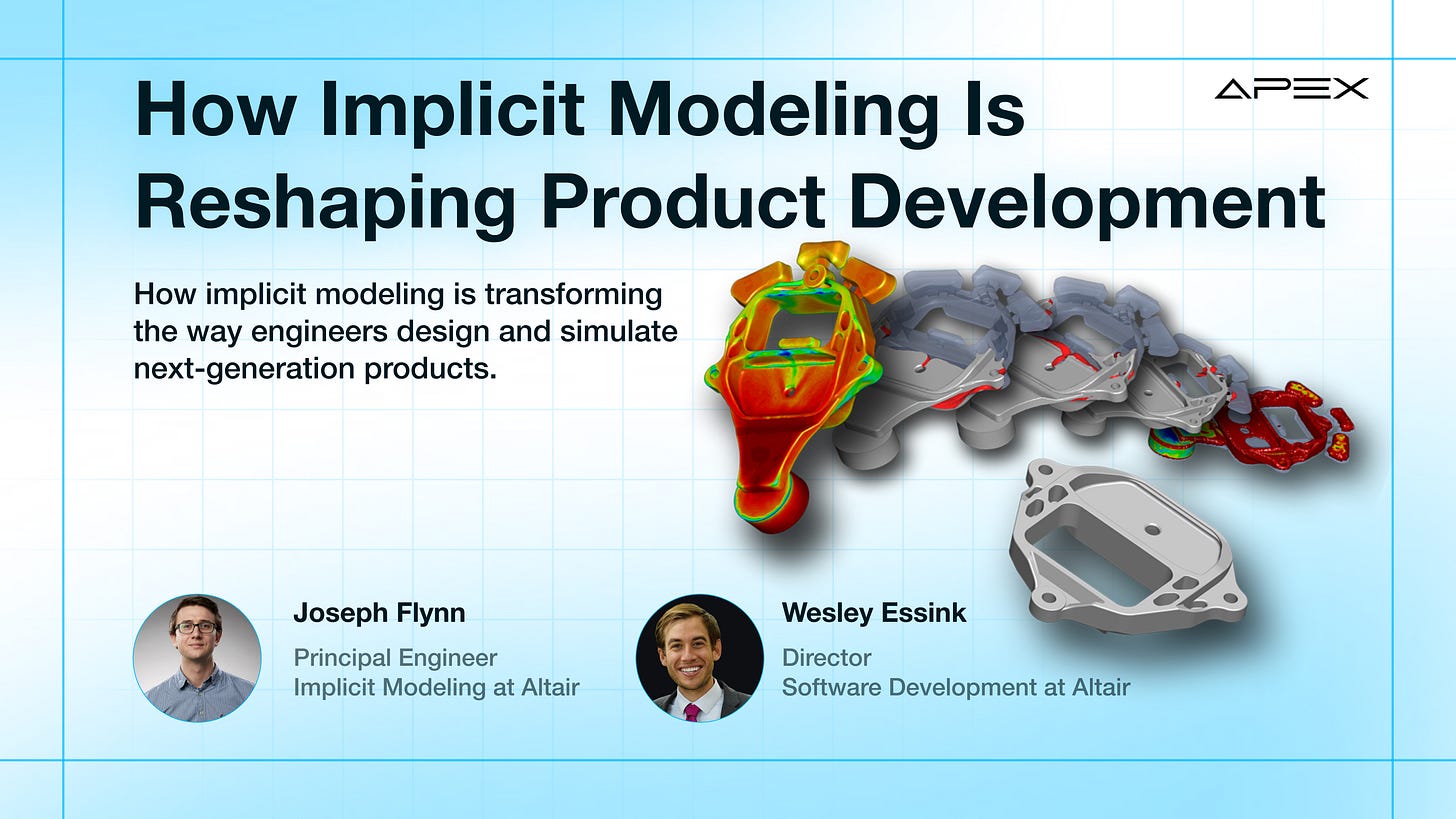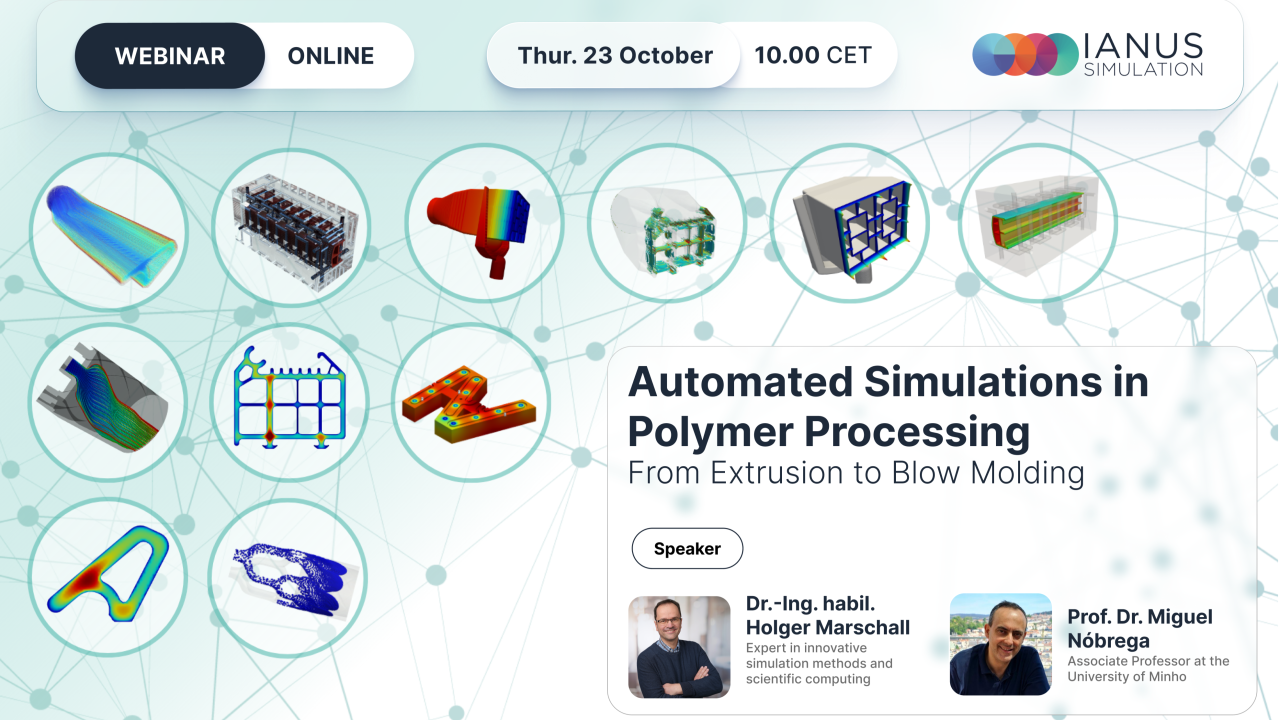Free CFD Lectures, Implicit Modeling & AI for Computer-Aided Design
🧠 “Some fear flutter because they do not understand it. And some fear it because they do.” – Theodore von Karman
🚀 LIVE Deep Dive Tomorrow - How Implicit Modeling Is Reshaping Product Development
This live deep dive explores how implicit modeling is transforming the way engineers design and simulate next-generation products. Traditional CAD and meshing workflows often limit creativity and efficiency, particularly when handling complex geometries or lattice structures.
💻 Automated Simulations in Polymer Processing
From extrusion to blow molding: Discover how automated simulations are transforming polymer processing workflows.
In this session, we’ll showcase fully integrated, cloud-ready FVM and FEM workflows for:
Extrusion (single/twin-screw, profile die design)
Injection molding (filling, packing, cooling, warpage)
Blow molding (with deep insights into clamping & inflation)
💻 Open Source Multiphase Flow Modeling for Real-world Applications
This open-source software has over three decades of development history and more than 7,000 registered users worldwide. MFiX has become the standard for comparing, implementing, and evaluating multiphase flow constitutive models and has been applied to an extremely diverse range of multiphase flows applications. The successes achieved in modeling complex multiphase flow systems have led to new and improved key attributes such as drag, polydispersity, attrition, and agglomeration models, among other significant advances.
💻 CFD Lectures for Incompressible Flow
The present lecture notes are written to emphasize the mathematics of the Navier–Stokes (N.–S.) equations of incompressible flow and the algorithms that have been developed over the past 30 years for solving them.
🧠 AI Helps Predict and Sketch Computer-Aided Design Models
Parametric computer-aided design (CAD) is the dominant paradigm in mechanical engineering for physical design. Distinguished by relational geometry, parametric CAD models begin as two-dimensional sketches consisting of geometric primitives (e.g., line segments, arcs) and explicit constraints between them (e.g., coincidence, perpendicularity) that form the basis for three-dimensional construction operations. Training machine learning models to reason about and synthesize parametric CAD designs has the potential to reduce design time and enable new design workflows.
💻 Engineering Tool of the Week – Lethe
Lethe (pronounced /ˈliːθiː/) is open-source computational fluid dynamics (CFD) software that uses high-order continuous Galerkin formulations to solve the incompressible Navier–Stokes equations (among others). Lethe contains a family of solvers that are based on deal.II, a finite element library. Through deal.II, Lethe uses Trilinos for its sparse linear algebra routines and p4est for its distributed adaptative quadtrees and octrees.
📚 Book of the Week
Turbulence: The Legacy of A. N. Kolmogorov
This textbook presents a modern account of turbulence, one of the greatest challenges in physics. The state-of-the-art is put into historical perspective five centuries after the first studies of Leonardo and half a century after the first attempt by A. N. Kolmogorov to predict the properties of flow at very high Reynolds numbers. Elementary presentations of dynamical systems ideas, of probabilistic methods (including the theory of large deviations) and of fractal geometry make this a self-contained textbook.
Let’s connect on Instagram or LinkedIn!
For any business-related issues or collaborations, email me at support@jousefmurad.com!
Keep engineering your mind! 🧠
Jousef








